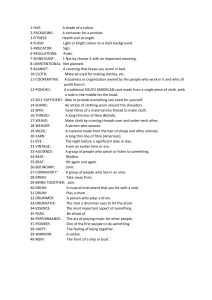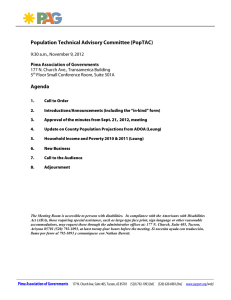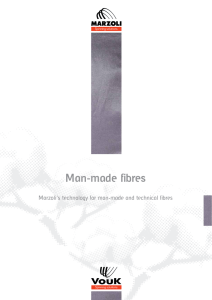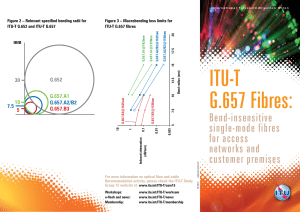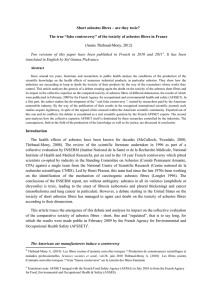Mechanical Behaviour of Recycled High Density Polyethylene
Anuncio
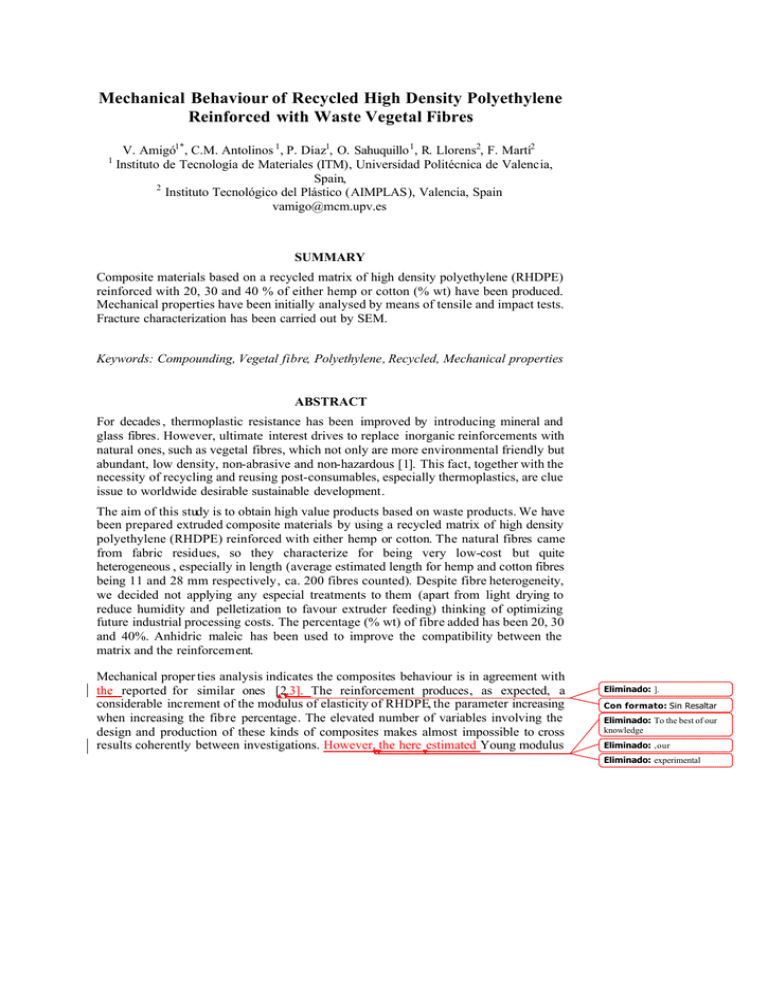
Mechanical Behaviour of Recycled High Density Polyethylene Reinforced with Waste Vegetal Fibres 1 V. Amigó1*, C.M. Antolinos 1, P. Díaz1, O. Sahuquillo 1, R. Llorens2, F. Martí2 Instituto de Tecnología de Materiales (ITM), Universidad Politécnica de Valencia, Spain, 2 Instituto Tecnológico del Plástico (AIMPLAS), Valencia, Spain [email protected] SUMMARY Composite materials based on a recycled matrix of high density polyethylene (RHDPE) reinforced with 20, 30 and 40 % of either hemp or cotton (% wt) have been produced. Mechanical properties have been initially analysed by means of tensile and impact tests. Fracture characterization has been carried out by SEM. Keywords: Compounding, Vegetal fibre, Polyethylene, Recycled, Mechanical properties ABSTRACT For decades , thermoplastic resistance has been improved by introducing mineral and glass fibres. However, ultimate interest drives to replace inorganic reinforcements with natural ones, such as vegetal fibres, which not only are more environmental friendly but abundant, low density, non-abrasive and non-hazardous [1]. This fact, together with the necessity of recycling and reusing post-consumables, especially thermoplastics, are clue issue to worldwide desirable sustainable development. The aim of this study is to obtain high value products based on waste products. We have been prepared extruded composite materials by using a recycled matrix of high density polyethylene (RHDPE) reinforced with either hemp or cotton. The natural fibres came from fabric residues, so they characterize for being very low-cost but quite heterogeneous , especially in length (average estimated length for hemp and cotton fibres being 11 and 28 mm respectively, ca. 200 fibres counted). Despite fibre heterogeneity, we decided not applying any especial treatments to them (apart from light drying to reduce humidity and pelletization to favour extruder feeding) thinking of optimizing future industrial processing costs. The percentage (% wt) of fibre added has been 20, 30 and 40%. Anhidric maleic has been used to improve the compatibility between the matrix and the reinforcement. Mechanical proper ties analysis indicates the composites behaviour is in agreement with the reported for similar ones [2,3]. The reinforcement produces, as expected, a considerable increment of the modulus of elasticity of RHDPE, the parameter increasing when increasing the fibre percentage. The elevated number of variables involving the design and production of these kinds of composites makes almost impossible to cross results coherently between investigations. However, the here estimated Young modulus Eliminado: ]. Con formato: Sin Resaltar Eliminado: To the best of our knowledge Eliminado: , our Eliminado: experimental values (ranging from ca. 1990 to 3600 MPa) can be considered, to the best of our knowledge, as excellent taking into account the reduced quality of the raw -materials used and the high percentages of fibre introduced. Interestingly, the resistance induced for the elected fibres seems to be independent of their nature. As usual, the impact strength of these kinds of composites results very low [3,4]. However, in our case the worsening on such a physical parameter is of the same order or even lower than most related ones, which is quite promising. Eliminado: . Eliminado: . Eliminado: other The fractures produced on the tensile and impact tests, analysed by Scanning Electron Microscopy (SEM), shows the typical characteristics expected for these composites. Figure 1 depicts two micrographies corresponding to cotton-containing samples. Picture corresponding to the tensile test shows signs of a pull-out mechanism where it is possible to identify on the matrix the fingerprints left for the presence of the fibres. Such a fact is indicative of the good adhesion achieved between the mixed phases. Eliminado: , Eliminado: , Eliminado: . Eliminado: , Eliminado: , Eliminado: , Eliminado: a) Figure 1. SEM micrographies of mechanical fractures of cotton-containing composites. Tensile fracture, 30% wt fibre (left). Impact fracture, 20% wt fibre (right). ACKNOWLEDGEMENTS The authors want to thank Spanish Ministerio de Medioambiente (project A581/2007/202.2) and CYTED program (project 307AC0307) for financial support. Eliminado: ngelo Eliminado: Eliminado: ark Eliminado: Eliminado: ing Eliminado: . Con formato: Fuente: Sin Cursiva References Eliminado: ; Con formato: Sin Resaltar 1. a) J. Biagiotti, D. Puglia, J. M. Kenny, J. Natural Fibers 1(2) (2004) 37-68; b) J. Biagiotti, D. Puglia, J. M. Kenny, J. Natural Fibers 1(3) (2004) 23-65. 2. A. G. Facca, M. T. Kortschot, N. Yan, Composites: Part A 37 (2006) 16601671. 3. D. Koçat, M. Tasdemir, I. Usta, N. Merdam, M. Akalin, Polymer-Plastics Technology and Engineering, 47 (2008) 502- 507. Con formato: Español (España - alfab. internacional) 4. Y. Lei, K. Wu, F. Yao, Y. Xu, Composites: Part A 38 (2007) 1664-1674. Con formato: Numeración y viñetas Eliminado: Con formato: Fuente: Cursiva Eliminado: <#>J. Biagiotti, S. Fiori, L. Torre, Polymer Composites, 25(1) , (2004) , 26 -36.¶ Con formato: Fuente: Cursiva Eliminado: , Eliminado: ,
